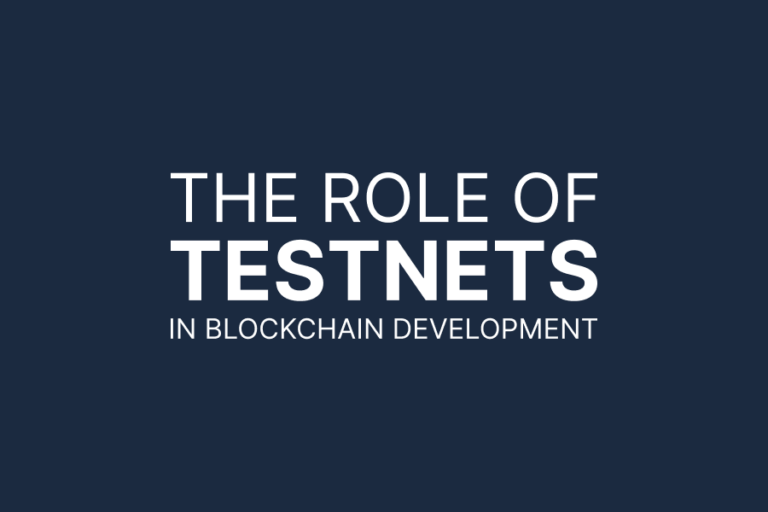The development and deployment of blockchain projects come with great responsibility, as they deal with valuable assets and complex systems of distributed nodes. Any error or vulnerability in the code can lead to catastrophic consequences, including the compromise of security and the loss of valuable assets. This is where testnets step in as a lifeline for blockchain developers, offering a safe and controlled environment for experimentation, refinement, and testing.
Understanding Testnets
A testnet, short for “test network”, is a specialized blockchain network designed exclusively for testing purposes. It serves as a sandbox where developers and programmers can create, modify, test, and monitor blockchain projects before they are deployed to the mainnet or the live network. Testnets are like dress rehearsals for blockchain applications, allowing developers to identify and resolve issues in a controlled environment.
In essence, a testnet is a parallel universe of the mainnet, where developers can experiment without the fear of real-world consequences. It’s a virtual playground where creativity knows no bounds, and innovation thrives.
One of the primary functions of a testnet is to provide developers with a playground for experimentation. In the fast-paced world of blockchain, innovation is key. Testnets allow developers to take risks, experiment with new features, and explore different approaches without the fear of compromising real assets or disrupting the mainnet.
Imagine you’re a developer with a groundbreaking idea for a decentralized application (DApp). You’re excited about the potential, but you’re also aware of the risks. Testnets offer you the freedom to turn your vision into reality without exposing it to the unforgiving realities of the mainnet. This is where blockchain dreams take shape and evolve into something extraordinary.
Testnet Functionality
In a testnet environment, multiple tests can be executed repeatedly. This iterative process enables developers to fine-tune their code and assess its performance under various conditions. Performance comparison between different versions of a project becomes feasible, helping developers make informed decisions.
Think of testnets as the artist’s studio where a masterpiece is pedantically crafted. Each stroke of the brush represents a code change, and each iteration brings the artwork closer to perfection. By running multiple tests and comparing results, developers can ensure that their blockchain projects are not just functional but also optimized for peak performance.
One of the critical advantages of testnets is their independence from the mainnet. They operate on a separate blockchain network, ensuring that testing activities do not interfere with any live transactions on the mainnet. This isolation is essential to maintain the integrity and security of the main blockchain.
Consider the mainnet as a bustling city with real-world transactions and assets at stake. Now, picture the testnet as an isolated laboratory where scientists conduct experiments without risking harm to the city’s residents. This separation guarantees that any unexpected results or mishaps in the testnet won’t spill over and disrupt the smooth operation of the mainnet.
Emulating Mainnet Behavior
To accurately simulate the behavior of the mainnet, testnets often employ similar consensus mechanisms. These mechanisms, such as proof-of-work (PoW) or proof-of-stake (PoS), determine how transactions are validated and added to the blockchain. By mimicking the mainnet’s consensus process, developers can anticipate how their projects will perform in a real-world scenario.
Think of consensus mechanisms as the rules of the game in blockchain. They ensure that every transaction is fair, secure, and verified. By using the same consensus mechanisms in testnets, developers can fine-tune their projects to thrive in the competitive landscape of the mainnet.
The Importance of Testnets
Now that we’ve explored the mechanics of testnets, let’s discuss why they are indispensable in the world of blockchain development. Cryptocurrencies and blockchain networks are incredibly complex, and a single flaw in the code can lead to devastating consequences. Deploying untested or flawed code on the mainnet can compromise security and result in the loss of valuable assets.
The importance of testnets cannot be overstated when it comes to risk mitigation. They act as a safety net, preventing developers from falling into the abyss of potential disasters. Picture a tightrope walker with a safety harness; the safety harness is the testnet, ensuring that even if a misstep occurs during development, the fall is not fatal.
Testnets serve as a crucial barrier between experimental development and the live network. They act as a protective shield for the mainnet by allowing developers to iron out any issues and vulnerabilities in their code before releasing it to the public. This proactive approach prevents potential disasters, maintains the trust of users, and upholds the integrity of the blockchain ecosystem.
Imagine if every new blockchain project were deployed directly to the mainnet without thorough testing. It would be asking to launch a spaceship without ensuring that it can safely return to Earth. Testnets are the launchpad where rigorous checks and tests take place to guarantee that the project can soar to the stars without crashing back down to Earth.
Real-World Examples
One of the most renowned examples of a testnet is Ethereum’s Ropsten Testnet. This testnet enables developers to test their smart contracts and applications on a network that mirrors the Ethereum mainnet. It has played a pivotal role in the development and refinement of countless Ethereum projects.
Ethereum’s Ropsten Testnet is like a mirror world for Ethereum, reflecting its features and capabilities. Developers can deploy and test their smart contracts on Ropsten before making them available to the Ethereum community. This ensures that the Ethereum ecosystem remains robust and secure.
Binance Smart Chain, another prominent blockchain platform, offers a testnet environment for developers to test and deploy their decentralized applications (DApps) without risking real assets. This testnet has accelerated the development of the Binance Smart Chain ecosystem.
Imagine you’re building a decentralized exchange (DEX) on the Binance Smart Chain. The testnet provides a risk-free environment to fine-tune your DEX’s functionality, security, and user experience. Once you’re confident in your project’s readiness, you can launch it on the mainnet, knowing that it has already withstood rigorous testing.



